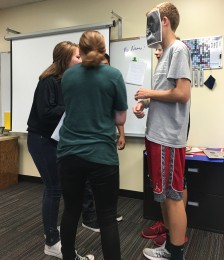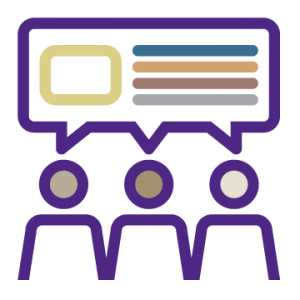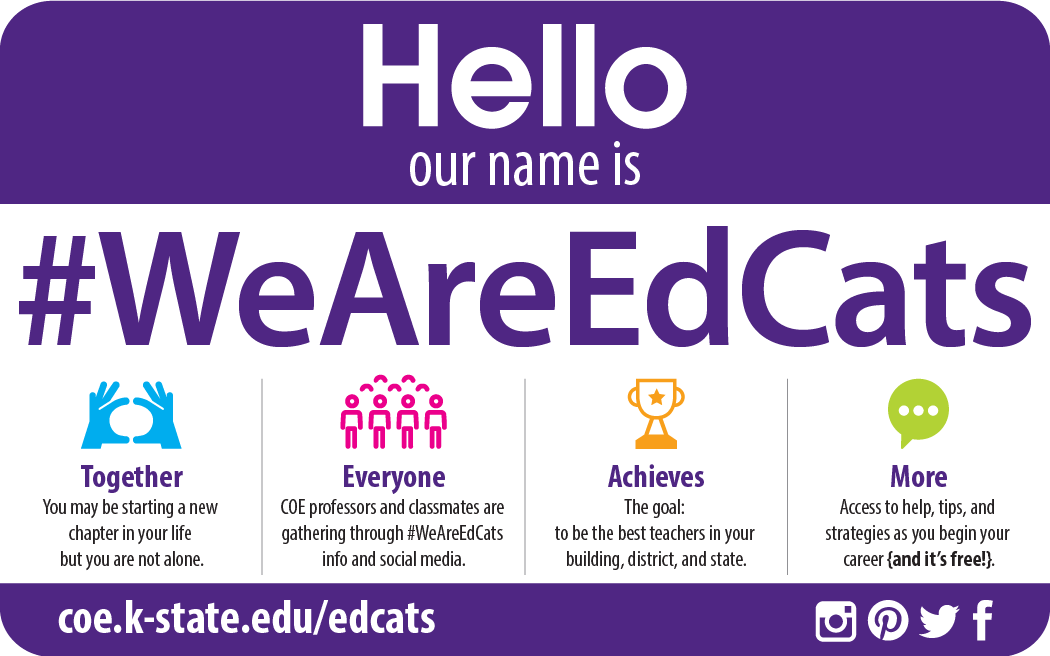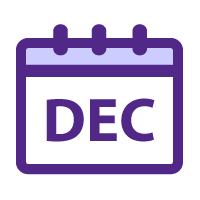Lori Goodson, Editor
Mary Hammel, Technical Editor
Category: November 2016
Help from Faculty is Just a Click Away
Are you looking for some valuable online resources for your students? Several Curriculum and Instruction faculty suggest the following:
Cyndi Kuhn (Technology) —
1. Workshop Resources: http://www.cyndikuhn.info
2. Twitter: https://twitter.com/cyndidannerkuhn
3. Blog/Technology Newsletter: http://www.technologybitsbytesnibbles.info/
4. Pinterest: http://pinterest.com/cyndidk/
5. Flipboard: https://flipboard.com/@cyndidannerkuhn/technology-for-teaching-learning-ilqd6on4y
6. Scoop.it: http://www.scoop.it/t/1-1-laptops-ipads
7. Weekly Resource Archive: http://cdk.posthaven.com
8. paper.li: iPads in the Classroom: https://paper.li/cyndidannerkuhn/1315581508#!headlines
Dr. Brad Burenheide (Secondary Social Studies) —
- U.S. National Archives and Records Administration (NARA) (http://www.archives.gov)
- Gilder Lehrman Institute of American History (https://www.gilderlehrman.org)
- National Council for the Social Studies (NCSS) (http://www.socialstudies.org)
Dr. Tom Vontz (Elementary Social Studies) —
- Ed Teacher Tech (http://edtechteacher.org)
- Getty Images (http://www.gettyimages.com)
- Fact Monster (http://www.factmonster.com/encyclopedia.html)
Dr. Sherri Martinie (Secondary Math) —
- Illustrative Mathematics (https://www.illustrativemathematics.org)
- Mathematics Assessment Project – (http://map.mathshell.org/materials/index.php)
- NCTM Illuminations: Resources for Teaching Math (http://illuminations.nctm.org)
- Math Practice Standards resources (http://www.debbiewaggoner.com/math-practice-standards.html)
Kaylee Myers (Elementary Education) —
- Starfall (http://www.starfall.com)
- Any site that has children’s books to read on-line or interactive books
- Hubbard’s Cupboard (http://www.hubbardscupboard.org)—For beginning reading teachers, especially the mini readers and section on Environmental print.
Dr. Vicki Sherbert (Secondary English/Language Arts, Speech/Theatre, Journalism) —
Dr. Phillip Payne (Music Education) —
- http://teachonline.asu.edu/objectives-builder/
- http://www.icompositions.com/
- iTunes and the App Store (these are changing every day and some are absolutely amazing!)
- Loopy and MadPad are two that are fantastic!
Dr. Tonnie Martinez (Curriculum and Instruction) —
Check out a Facebook page, “First Year Teacher Support,” she’s created at https://www.facebook.com/EdCats/ Get advice; give advice—this page is for YOU! Early-career teachers can connect to ask questions, share ideas, and support each other in navigating the first years of teaching.
Value Diversity While Celebrating Holidays
 Don’t look now, but it’s almost time to flip your calendar to 2017! That’s right – for all of you first-year teachers, you’ve almost made it through half a year as a teacher! Congratulations!
Don’t look now, but it’s almost time to flip your calendar to 2017! That’s right – for all of you first-year teachers, you’ve almost made it through half a year as a teacher! Congratulations!
As we move toward winter break, keep in mind that, while we may consider this the holiday season, that definition can vary from person to person. Among the celebrations are Christmas, Hanukkah, and Kwanzaa.
Remember that, while one holiday may be celebrated by the majority of your students, we all need lessons about other cultures, celebrations and traditions. Be sure to consider the diverse group of students you have in your classroom before saturating your room with decorations or items from one culture.
Use the time to open your students’ worlds to other classmates’ beliefs. Scholastic.com suggests creating travel centers to open their world. Check out their ideas at http://www.scholastic.com/teachers/lesson-plan/winter-holidays-celebrating-diversity. Another resource provides a teacher guide on how to celebrate winter holiday: http://www.scholastic.com/teachers/lesson-plan/celebrate-winter-holidays-teaching-guide. Such an awareness can bring a greater respect and appreciation and make our huge world just a little bit smaller…and friendlier.
In the Classroom: Shana Schmidt

Shana Schmidt, a recent K-State graduate, is teaching 10th grade World Literature and 12th grade British Literature at nearby Rock Creek High School. She’s also working on a master’s degree in English Composition and Rhetoric.
“I love how supportive the staff is at Rock Creek HS,” she said. “My favorite thing about teaching is watching students engage and understanding text. We started out the semester reading a novel, and their observations were good, but, by the end of the book, they were running a Socratic Circle and holding a trial and using the text as evidence to support their claims.
She said the most challenging part of teaching has been trying to keep all her classes at the same pace.

“I sometimes will have one hour fly through what I have planned, to only have another class get halfway done with what I have planned. So I have learned to be flexible! I also learned to use post-it notes in my planner, so I can move things back if needed.”
She credits the K-State faculty with helping her make a smooth transition to her own classroom.
“My preparation at KSU College of Education prepared me to have high expectations for my students and myself,” she said. “I keep in touch with my professors at K-State, who are still great resource and have been an amazing support system this first year of teaching. I could not have achieved my goals without their guidance and advice.”

Faculty Meetings: A Survivor’s Guide
 At this point, you’ve probably experienced a teaching tradition—which can’t be replicated anywhere else but within the walls of your school: The faculty meeting. You’ve probably attended two to three faculty meetings, and you’re trying to figure them out. We’ll try to address some of those burning questions you have about the ever-popular faculty meeting.
At this point, you’ve probably experienced a teaching tradition—which can’t be replicated anywhere else but within the walls of your school: The faculty meeting. You’ve probably attended two to three faculty meetings, and you’re trying to figure them out. We’ll try to address some of those burning questions you have about the ever-popular faculty meeting.
- Where do I sit? With my content teachers? My new friends? My mentor (who may or may not be my friend)? The faculty member who intimidates me the most? When you start teaching, sitting down at a faculty meeting will bring back visions of your life as a fifth-grader trying to find a spot on a school bus. Uncomfortable, humbling, awkward at best. Use the same approach you did then: Look for a smiling face—one that says “I’m not gonna steal your lunch money.” And maybe one that says, “Welcome, friend!”—only probably not quite so directly. At some meetings, you’ll find it beneficial to sit with those who are teaching similar content or age group as you; other times, by all means go with the most welcoming faces.
- How much should I say at these meetings? Should I speak my mind? There is no magic rule about this, though you’re encouraged to observe for the first few meetings. Jumping in immediately with your ideas can be a risky move, no matter how earth-shatteringly amazing you believe your ideas are. Often, as a new teacher, it’s best to quietly share your ideas with a colleague, who can help you avoid any issues that may have existed long before you joined the faculty.
- How do I deal with the colleague’s running commentary throughout the meeting? Well, smiling is always a good response—it’s neutral, not too supportive, not too negative. You’re new here, so take some time to figure out the power structure of the faculty. In time, you’ll know when it’s OK to laugh out loud and when it’s time to focus on—or at least pretend to—taking more notes about the topic at hand.
- My personal favorite: The principal provided doughnuts! How many should I take? I’m starving! Start with one…then, when there’s a heated discussion about students chewing gum in class, grab another one! Remember…pace yourself!
- And just what are my students doing while they’re roaming the halls before or after school? Probably…nothing good. That’s why we lock our classroom doors when we step away.
Don’t get us wrong; often faculty meetings can be beneficial—coming together in times of tragedy, celebration, and innovation. It’ll just take some time to figure out the key players and your role in these sessions.
#WeAreEdCats
 Have you checked this out yet? Join the fun today!
Have you checked this out yet? Join the fun today!
Dr. Tonnie Martinez and others are leading an effort to help beginning teachers like you thrive as you begin your career. Be ready to hear lots of good things about #WeAreEdCats in the future! Check out the website at coe.k-state.edu/edcats!
Have You Emailed Us Lately?
![]() Do you have a question about classroom procedures? Or a suggestion for a topic we should address in Before the Bell? Want to add your name to our mailing list? Or provide a different email for our mailing list? Don’t forget to send us a photo of you at work in your classroom!
Do you have a question about classroom procedures? Or a suggestion for a topic we should address in Before the Bell? Want to add your name to our mailing list? Or provide a different email for our mailing list? Don’t forget to send us a photo of you at work in your classroom!
Early-career teachers, feel free to jump in and offer suggestions to those who are following your career choice!
We’d love to hear from you, so please email us at lagoodson@k-state.edu.
Go, COE Cats!
